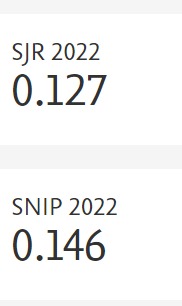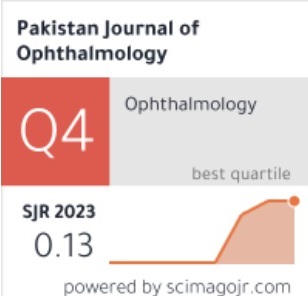Refraction and Low Vision Rehabilitation in Patients with Oculocutaneous Albinism
Doi: 10.36351/pjo.v36i2.978
DOI:
https://doi.org/10.36351/pjo.v36i2.978Keywords:
Albinism, Low vision, Low vision rehabilitation, Oculocutaneous Albinism, RefractionAbstract
Purpose: To evaluate the types of refractive errors and compliance of patients of Oculocutaneous Albinism (OCA) to low vision aids.
Study Design: Descriptive observational study.
Place and Duration of Study: Provincial Directorate of Health, Adana City Education and Research Hospital, from 2010 to 2018.
Material and Methods: Seven hundred and fifteen patients attended the hospital between 2010 and 2018 with the complaint of low vision and 31 patients with OCA were included in this study by convenient sampling. Best corrected distance and near visual acuity (VA) was measured along with the complete ocular examination. Patients were classified according to low vision and refraction degrees. High degree near eyeglasses, Galilean and Keplerian telescopes, magnifiers and special filter glasses were used as low vision aids (LVA).
Results: Mean age was 16.45 ± 12.72 years. On admission, mean distance VA was 0.12 ± 0.07 [mean log MAR 0.9], near VA was 1.48M ± 0.74M, astigmatism was 4.02 ± 1.45 diopters (D), and spherical equivalents were 1.54 ± 4.96 D. Hypermetropia was seen more frequently than myopia. Twenty-seven (87%) patients were prescribed telescopes for distance. Near visual acuity increased from 1.4M ± 0.7M to 0.9M ± 0.4M after rehabilitation. There was an increase in distance visual acuity in all patients (p < 0.001). Seventeen (63%) patients bought the telescope, and 15 (55%) patients used the device. The most preferred special filter glasses were 450nm (39%) and 540 nm (25%).
Conclusion: Astigmatism in oculocutaneous albinism was with the rule and the most commonly detected refractive error was hypermetropia. Patients are non-compliant in buying telescopes in which case tablet and computers with special applications for low vision can be better options.






